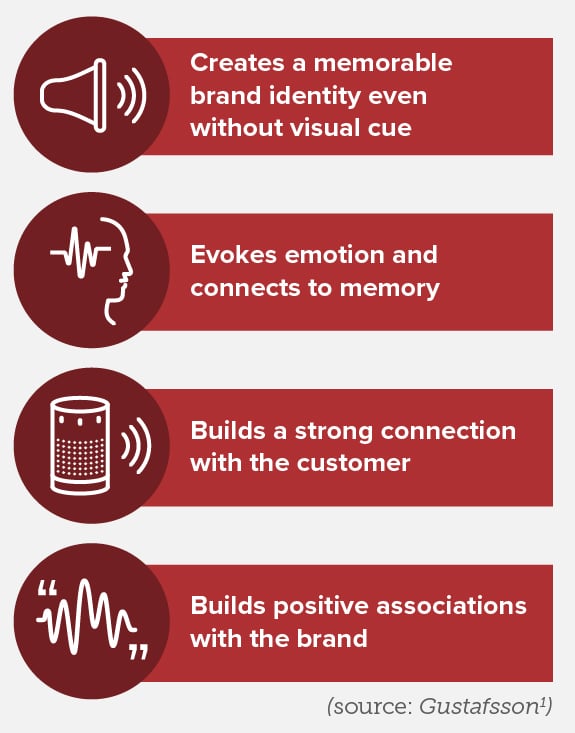Branding by senses: what role can audio play?
While most branding happens through visual cues and consistent messaging, there is a role for connecting to other senses including through sound and smell. Audio or sonic branding can create powerful, lasting connections between brands and customers. As consumers using home assistants like Alexa and Google Home make decisions without visual cues, sonic logos can help brands navigate the growing dominance of voice-first technology in the marketplace.
Audio logos reinforce brand identity and create connections between sound and experience.1,2 There is a long history to sonic branding from the early days of jingles and sound cues, including the Schweppes can opening, through the more recent and utterly dominant Apple text message notes. These sounds produce almost instantaneous responses and cue associations with the brand.
While jingles can form the basis of long-term sonic branding, they are often designed for the short- or medium-term, in support of a particular marketing initiative or campaign. A sonic logo is a long-term component of brand identity that accompanies the entire customer journey and unites the whole brand, bringing coherence to different products and experiences. Mastercard recently made waves by announcing its new sonic logo which it hopes will ultimately become iconic and create immediate associations with the brand.3 They also removed text from their logo, marking a commitment to the growth of audio as a vital part of brand identity in the increasingly mobile digital world.
The benefits of audio branding


A strong audio logo needs to stand out, be recognizable in a brief amount of time, connect in a clear way to brand values or the broader identity and story of the brand, and differentiate the brand from others. A streamlined and customized sonic brand should offer one clear, easily identifiable sound that doesn’t infringe on existing sounds and avoids being too similar to other audio logos. It should also be consistent with the visual identity, creating a unified brand experience across all touchpoints, and clearly reflect your brand. Translating visual logos and experiences to audio can be a challenge, particularly in the increasingly crowded soundscape. But the right sonic brand holds the possibility of providing an audio language that embodies brand values and brand identity while engaging and influencing customers on a long-term emotional and visceral level.
As you consider your marketing strategy going forward, how will you use sonic branding to create an audio connection with your customer?
Selected sources:
